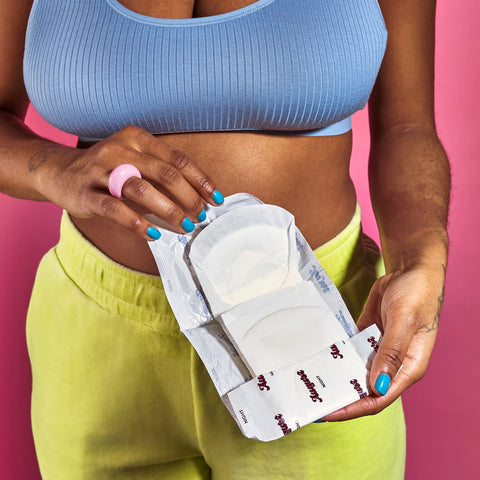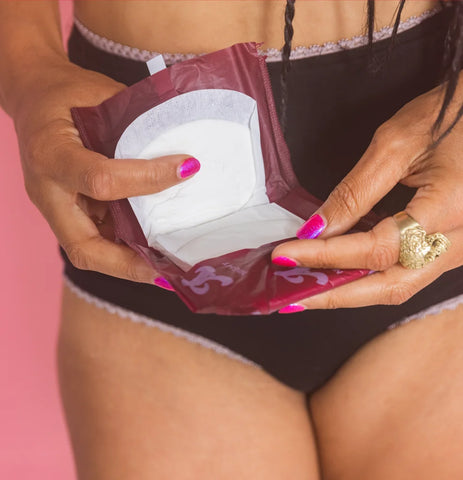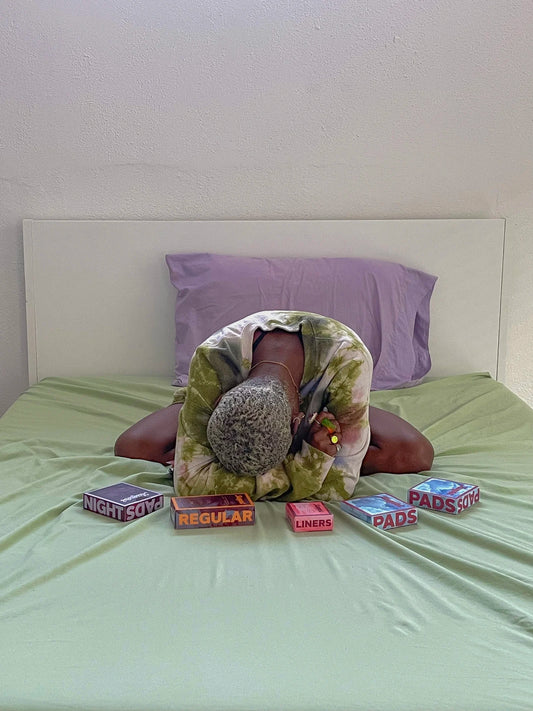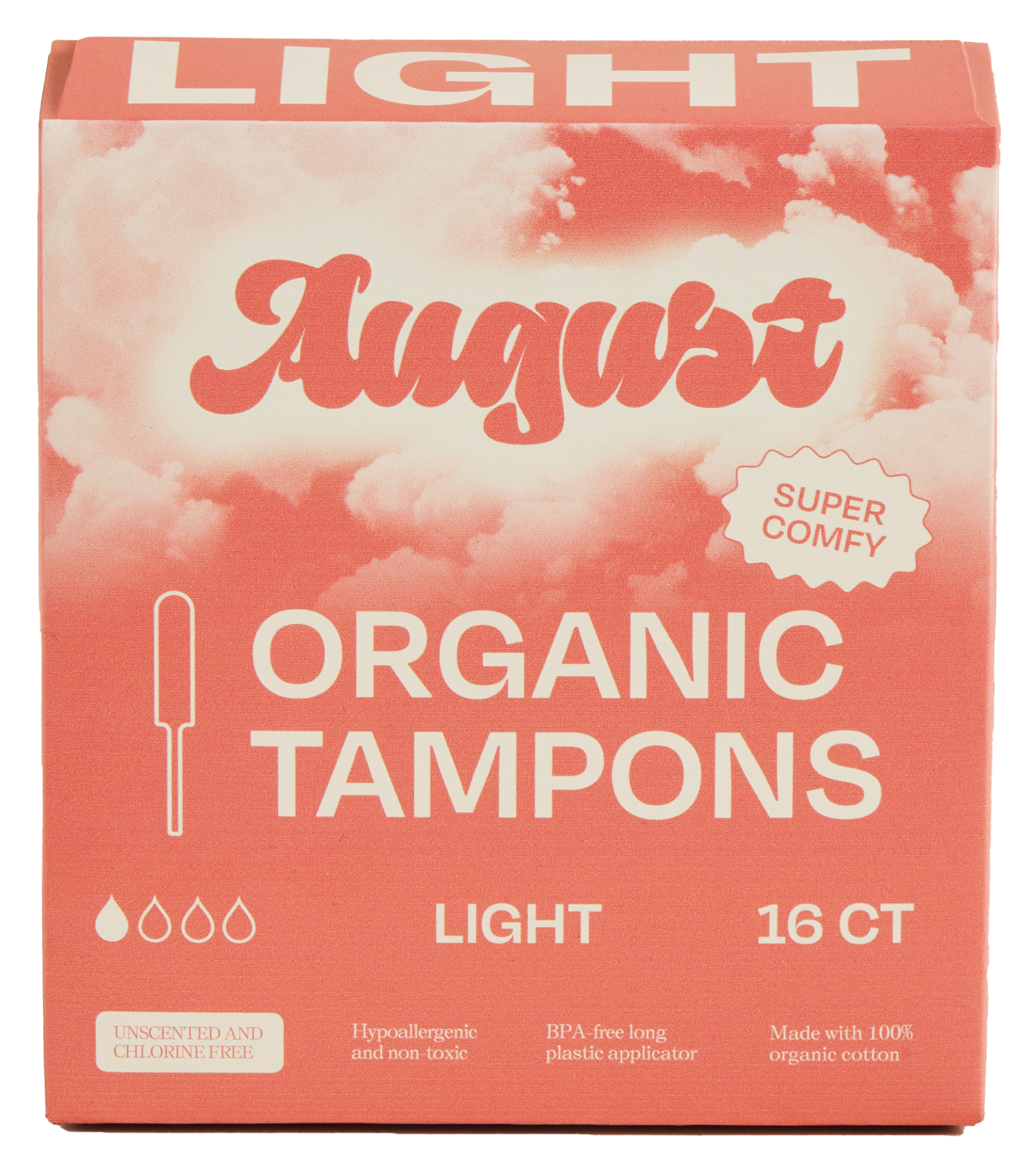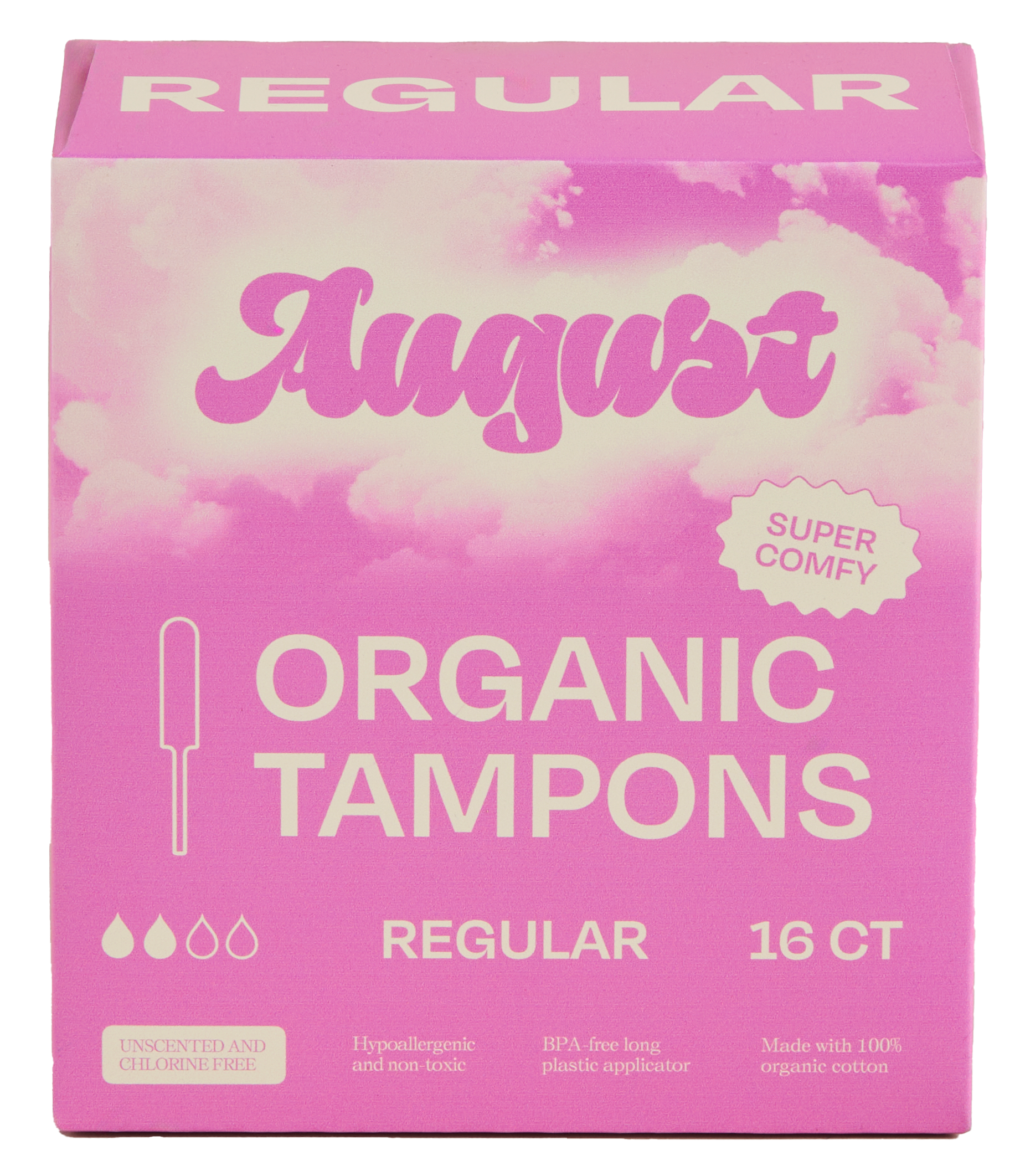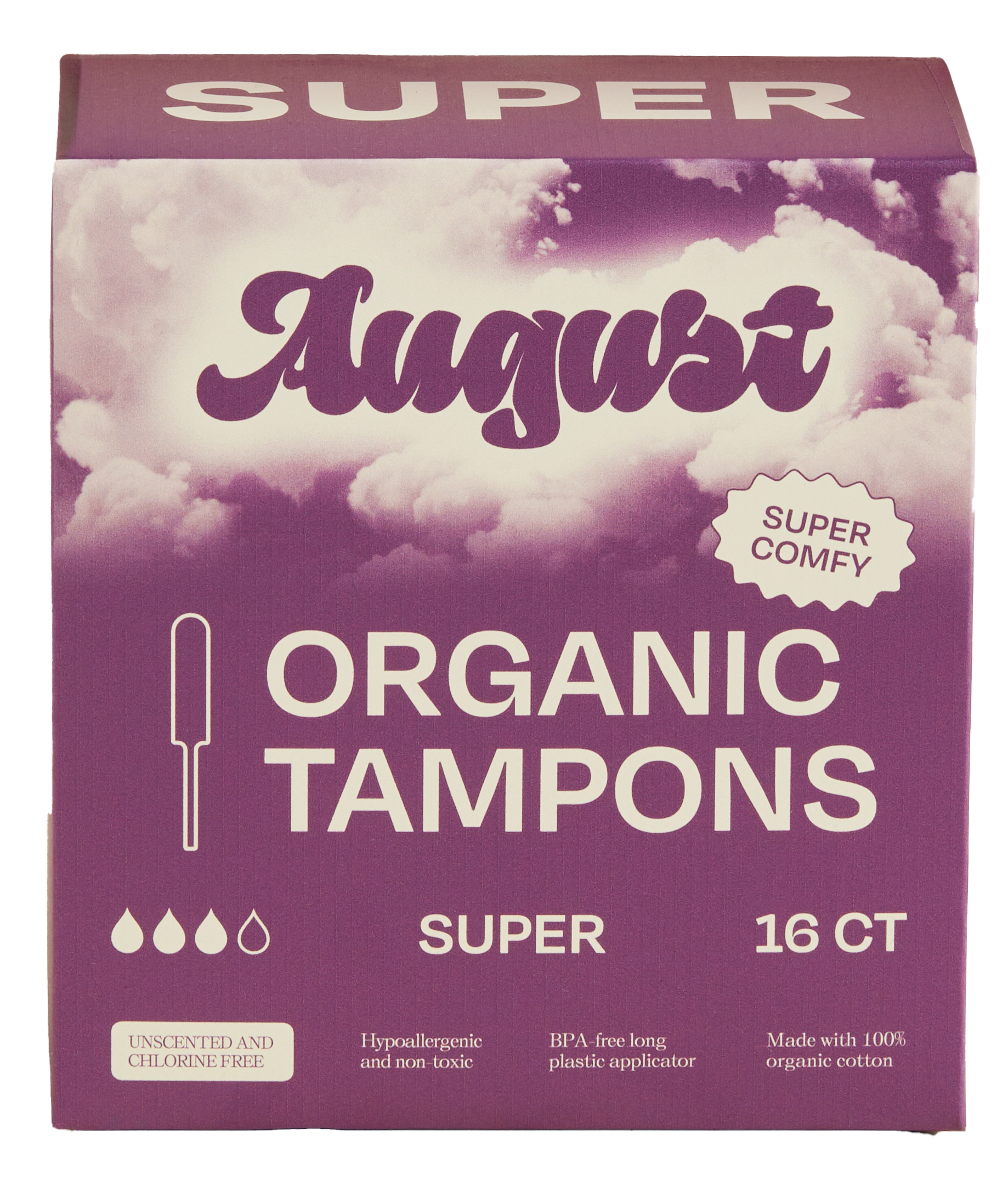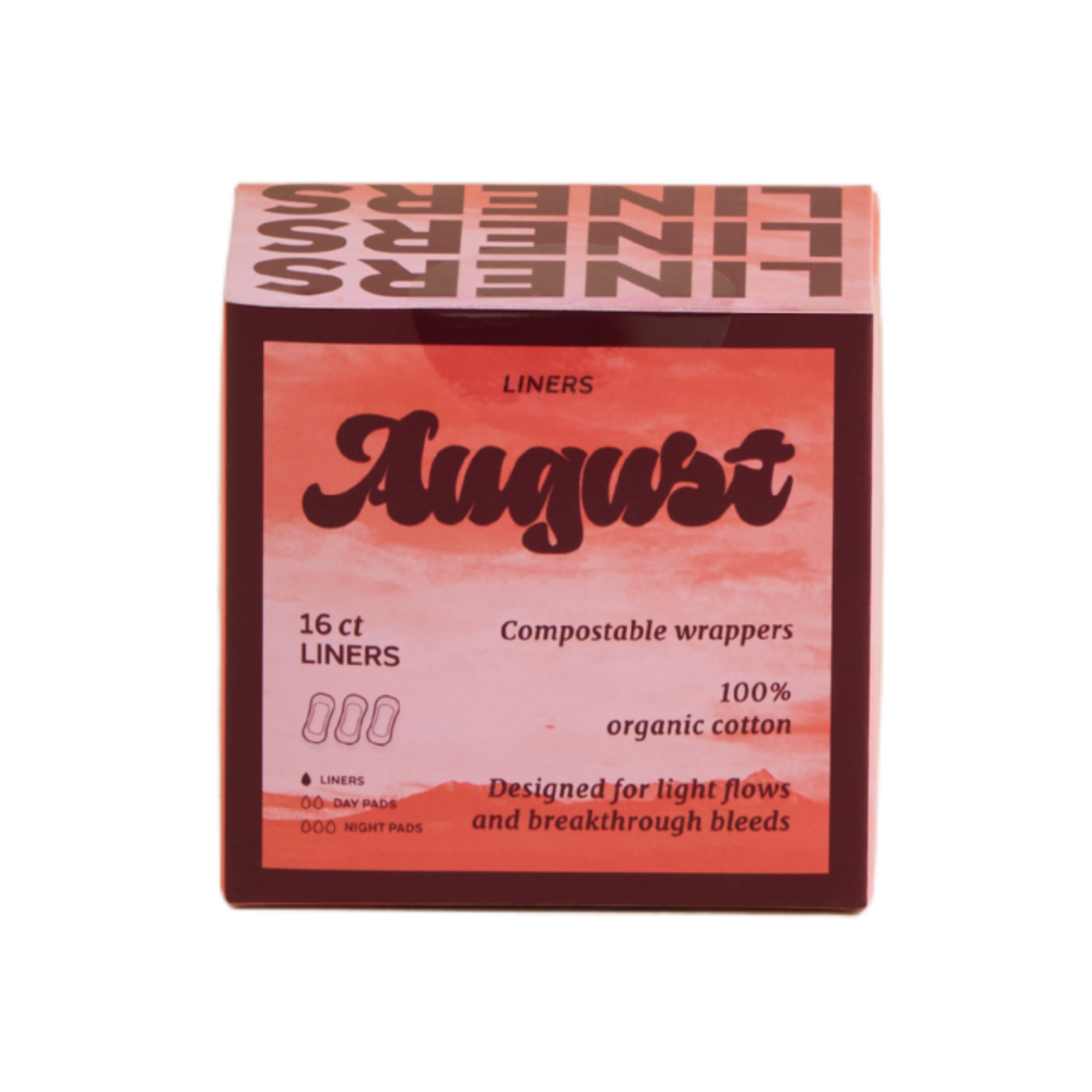No shame about period blood here – so let’s get right into it!
This article (and all our content, in fact) aims to educate and, in turn, normalize the biological process of periods. We’re open and candid and won’t shy away from the details!
TW: Read on, and also know that there will be some photos of menstrual blood throughout!
p.s. cover image by @kimbraaudrey, with permission!
SECTION 1: BLOOD 101…
Keep reading for the where, what, how and why of menstrual blood!
Where does period blood come from?

The uterus is where the blood (and other menstrual fluids) are coming out from. Your period comes down the vaginal canal and out through the vaginal opening (between the urinary opening and butthole).
What does period blood actually consist of?
Menstrual fluid is made up of a bunch of different substances from endometrial lining to vaginal discharge! In most cases, blood only makes up 36% of the menstrual flow.
Although an average amount of blood to lose is about 80mL, the quantity of menstrual fluid lost (and absorbed by period products) during a period is closer to 111mL.
What our doctors say: At a microscopic level, period blood consists of blood and endometrial lining, which are often excreted in the form of viscous clumps of sloughed uterine tissue. This occurs when an unfertilized egg fails to implant during the menstrual cycle.
These secretions are mostly made up of water and electrolytes such as sodium or potassium. This ionic solution helps keep the pH low and prevents foreign bacteria from flourishing. Bacteria is also secreted because of how moist the vagina becomes during this time of the menstrual cycle.
What does, or should, period blood look like?

Period blood can be a variety of different shades of red, and depending on the person, the amount of flow will also vary.
Is period blood the body’s way of excreting toxins?
Despite what the period-shamers might think, menstrual blood is NOT rejected body fluids or the body’s way of flushing out toxins. Periods are a sign of health!
Think of it as evolved vaginal secretion — there’s a little bit of blood, uterine tissue, mucus lining, and bacteria that allow the reproductive cycle to continue.
SECTION 2: COLOR…
Should I be worried if my period blood isn’t bright red??
Keep reading for the answer.
What gives period blood its color & why does that color fluctuate?

Menstrual blood can change in color through the course of the period and is typically nothing to be worried about.
Period blood changes to darker tones due to oxidation, a process where older blood has been exposed to oxygen for a longer time. Meanwhile lighter shades of red merely mean that the blood is newer and has not had the time to oxidize and get darker. Nonetheless, changing colors is entirely normal!
It’s true that there could be something else going on but really, you should only be concerned if there is drastic change, change of color at times when you don’t normally expect it, or discharge changes.
Why is my period blood brown or darker sometimes?
Browner and darker hues of blood are common, specifically at the beginning of your cycle since, at this point, the process of blood leaving the uterus might be slower due to your flow. Plus, darker colored blood happens due to oxidation (as explained before).
For example, as you wake up, or after sitting for a while, you may see darker red blood, which signifies that the blood has been in the uterus or vagina for a while and has had more time to deepen in color before you see it.
What do period blood colors mean?

-
Black: Not necessarily a reason to be alarmed, it means the blood is oxidized (the same process that turns an avocado brown when it is exposed to air). Could also be a sign of miscarriage or ectopic pregnancy.
-
Brown of all shades: a sign of old blood, or, ‘Lochia” (aka the bleeding menstruators experience for the first four to six weeks after delivering a baby), pregnancy or miscarriage.
-
Dark Red: Oxidized blood: after waking up or lying down for a while since the blood has sat in your uterus for a while and not yet been exposed to oxygen to change the color. Typically associated with the end of your period, blood clots, post-period and especially for those who have had a cesarean section in the last 24 hours.
-
Bright Red: Blood is fresh & flowing quickly, on the heaviest days of your period. If you are spotting between periods, this red could mean infection (Chlamydia and Gonorrhea). Also, pregnancy, polyps, or uterine fibroids tend to be bright red.
-
Pink: Typically when your period starts, when spotting. It is usually lighter due to being diluted (mixed together) with your cervical fluid that is also exiting the vaginal canal. Sometimes pink blood can also indicate low estrogen levels which could be caused by taking hormonal birth control, mid-cycle spotting (pregnancy), or nearing menopause.
-
Orange: When blood mixes with cervical fluid it could also come out as slightly orange. Other moments of orange coloring could also be around the time of suspected implantation or 10-14 days after conception, or infections like a bacterial infection or STI.
-
Gray or off-white discharge: gray blood is associated with infections like bacterial vaginosis or miscarriage.
SECTION 3: TEXTURE…
We KNOW you’re all curious about blood clots…
What is a blood clot?

Menstrual clots are blobs of blood, tissue, and uterine lining that you may have noticed on your pad when on your period.
Unlike the clots that form within your veins, period blood clots are totally safe and normal as long as they are smaller than about the size of a quarter coin. They are a natural defense mechanism to prevent too much blood from leaving your body at one time.
Should I be worried if I see clots in my menstrual blood?
Normal clots during menstruation can come in a range of colors and are occasional. Abnormal blood clots are larger than a quarter, occur frequently and are accompanied by large amounts of menstrual bleeding.
If you're regularly observing clots larger than about a quarter, and are experiencing a very heavy period, it might be a good idea to check in with your trusted health care provider.
What could heavy bleeding and too many blood clots be symptoms of?
This could be a sign of several underlying period conditions like uterine obstruction, uterine fibroids, endometriosis, hormone imbalance and cancer to name a few.
You should see a doctor if you regularly have large-sized clots, experience fatigue, paleness, shortness of breath and chest pains.
SECTION 4: SMELL…
When we say unapologetic period education we MEAN IT.
Does period blood actually smell?

It can, since all vaginas have a natural odor and that’s where your period is coming from.
Most odors are harmless, but if something smells out of the ordinary be sure to see your doctor!
Why does period blood smell?
Period blood stays in the vagina for an extended period of time exposing it to the natural vaginal bacteria.
SECTION 5: AMOUNT…
And last but not least, what is a ‘normal’ amount of blood to lose during a period?
How much blood do you lose on your period?

TBH, no one is particularly good at measuring the amount of period blood coming out, and the definition of heavy varies from person to person.
Medically speaking, the average menstruator will lose less than 16 teaspoons (or 80ml) over the course of their entire period – that’s the fluid capacity of a SINGLE August Night Pad btw).
A medically-defined heavy period is when the fluid loss of your whole period is more than 80ml or lasts longer than 7 days.
How much period blood is too much?
You should seek help from a medical professional if your period:
- Is soaking through more than 1 pad within 2 hours
- Lasts longer than 7 days
- Has frequent clots larger than a quarter coin
- Is usually light and then suddenly becomes heavy
- Is causing you to feel dizzy, nauseous, appear pale, or even causing you to faint
- Generally, just if you’re concerned and your flow is making you nervous – you should feel comfortable checking in with your doctor
Why do I bleed in the middle of my cycle sometimes?
We call this ‘spotting’.
In the middle of your cycle, the hormone estrogen causes the endometrial lining to thicken at ovulation when your estrogen levels peak. Progesterone then rises to maintain the endometrium. Spotting usually lasts from 1-3 days mid-cycle and is typically not cause for concern.
If you are experiencing irregular periods, check in with your doctor to check in about underlying issues that can be treated if caught early.
Get to know your flow!
Remember to:
-
Investigate & track the different features of it. OB/GYNs will ask you when your last period was so it’s also a great way to have an answer ready!
-
Take note of which absorbency size gets fully soaked and after how many hours. This will help you determine which products you like best and need for your coverage. (this might mean super tampons on day 1 but light tampons by day 5).
Looking for more sustainable, comfortable period care that ACTUALLY works?

Check out August’s Build-A-Box option: monthly period products customized to YOUR flow.










